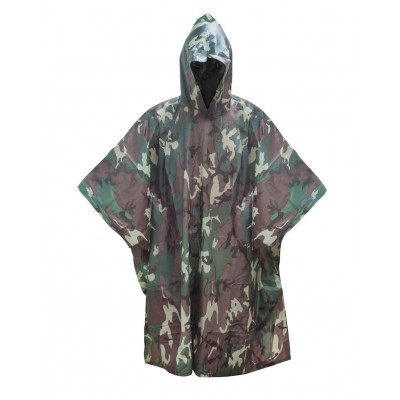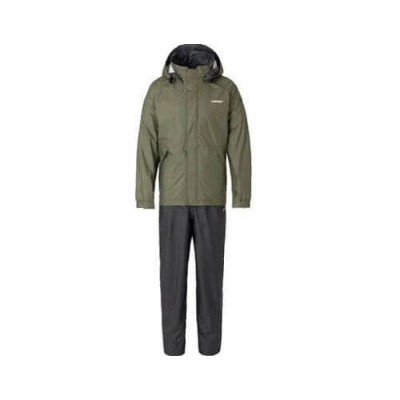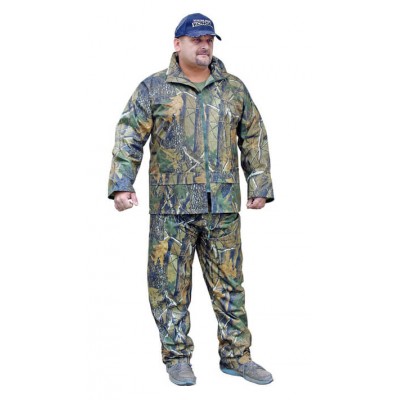Rainsuits
Advantages and Disadvantages of Raincoats: a Guide for the Consumer
Types and Materials of Raincoats
When choosing the right raincoat, it is important to take into account the materials from which they are made, as this has a direct impact on their functionality. The most popular raincoat materials are PVC, polyester, nylon and Gore-Tex. Each has specific advantages and disadvantages.
PVC (polyvinyl chloride) is a widely used material known for its excellent water resistance. PVC raincoats are highly waterproof, easy to clean and often cheaper. However, the disadvantage of this material is poor ventilation, which can make it uncomfortable to wear for long periods of time in hotter weather.
Polyester is another popular choice. Polyester fabric is lightweight, windproof and is often coated with an additional waterproof layer. It is better ventilated than PVC but may be less durable in the long term. It is an excellent alternative for those looking for an inexpensive and easy to maintain raincoat.
Nylon - high quality raincoats are often made from this material. Nylon is strong, flexible and highly resistant to tearing. The use of additional waterproof layers makes nylon an excellent choice for both lighter and more extreme weather conditions. In addition, it offers good ventilation. The only disadvantage may be the higher price.
Gore-Tex is an innovative material perfectly suited to outdoor activities. Gore-Tex is not only waterproof but also highly breathable. This material combines a high level of wind and rain protection with comfort and is therefore often used in premium raincoats. Despite its high price, Gore-Tex is considered to be one of the best choices because of its long-lasting durability and functionality.
First of all, it is important to pay attention to your needs and the nature of the activity. Choosing the right material will make the raincoat a reliable companion in all weather conditions.
Benefits of raincoats
Raincoats offer many advantages that make them indispensable in a wide range of weather conditions. Their main function is protection against rain. Modern advances in material technology ensure that raincoats are not only waterproof but also keep the wearer dry, even in heavy downpours. This makes raincoats very popular in both urban and rural areas.
In addition, many raincoats are made of lightweight materials, which makes them easy to wear and carry. This is particularly useful when you need to travel or change location when the weather suddenly changes. Compact raincoats fit easily into a handbag or rucksack, so you can be ready for any weather without carrying extra weight.
The raincoats are also highly versatile. They are suitable for a wide range of occasions, from daily walks in the city to trips to the countryside. Seasonal adaptation is another advantage. For example, a thicker raincoat with a lining can be used in the cold season, while a lightweight version can be used in the warm season.
Some models offer even more functionality. The mesh integrated in the structure of the raincoat protects against insects, which is particularly important in nature. Special hoods with windproof adjusters and deep, zipped pockets ensure greater comfort. All this makes the raincoat practical and reliable in both urban and wilderness conditions.
Disadvantages of raincoats
Although raincoats are an essential garment for protection from the rain, they do have their drawbacks, which are worth considering before making a purchasing decision. One commonly cited disadvantage is the breathability of some raincoat materials. Materials that are completely waterproof are often less breathable, which can lead to discomfort with sub-optimal ventilation. This is particularly evident when wearing a raincoat for extended periods of time, when moisture and heat accumulate inside the garment. This problem can be addressed by using more advanced materials or design techniques, but this tends to increase the cost of the raincoat.
Another important aspect is the durability of raincoats. Cheap models are often made of less durable material that tears easily or loses its waterproof properties. Such a drawback can lead to disappointment when a seemingly economical choice becomes a cause of extra costs because you have to look for a replacement at short notice. In addition, poor quality zips and seams can become weak points where moisture can penetrate, reducing the raincoat's effectiveness.
Design flaws are also important in terms of consumer expectations. While some brands offer a wide variety of colours and styles, most raincoats on the market are limited in design. This can be a problem for those who want to match their outfits or are simply looking for something more unique. Standard designs often come in uniform, neutral colours and therefore do not always suit every individual's taste and style needs.
Given these shortcomings, it is important for consumers to properly assess their needs and decide which aspects are most important to them. This is the only way to find a raincoat that not only fulfils its main function but also meets all other expectations.
Raincoat Selection Guide
When choosing a raincoat, it is necessary to take into account a variety of factors that will help you choose the best option for your needs. First of all, it is important to consider the place where you live and the characteristics of the seasons. If you live in an area where it rains frequently, a reliable and high-quality raincoat will be essential. It is also important to pay attention to the seasons - in spring and autumn you may need a lighter raincoat, while in winter you may need an insulated, warm raincoat.
The type of activity for which you intend to use the raincoat is also important. If you plan to be active outdoors, such as hiking or running, choose a lightweight, easy-moving model with good ventilation. For everyday use in the city, sleeker, stylish and practical raincoats that can be easily combined with other clothing will be more suitable.
Budget is often a deciding factor when choosing a raincoat. Although quality raincoats usually cost more, it is worth investing in a reliable product that will last a long time. To find the optimal option, pay attention to online reviews, listen to recommendations from friends or family, and take a good look at the brand's reputation and the quality of the product.
When it comes to assessing quality, the most important parameters are materials and waterproof technology. Good raincoats are made of materials such as Gore-Tex or Pertex, which are waterproof but also breathable. Check the finish of the seams - they must be sealed to prevent water ingress.


